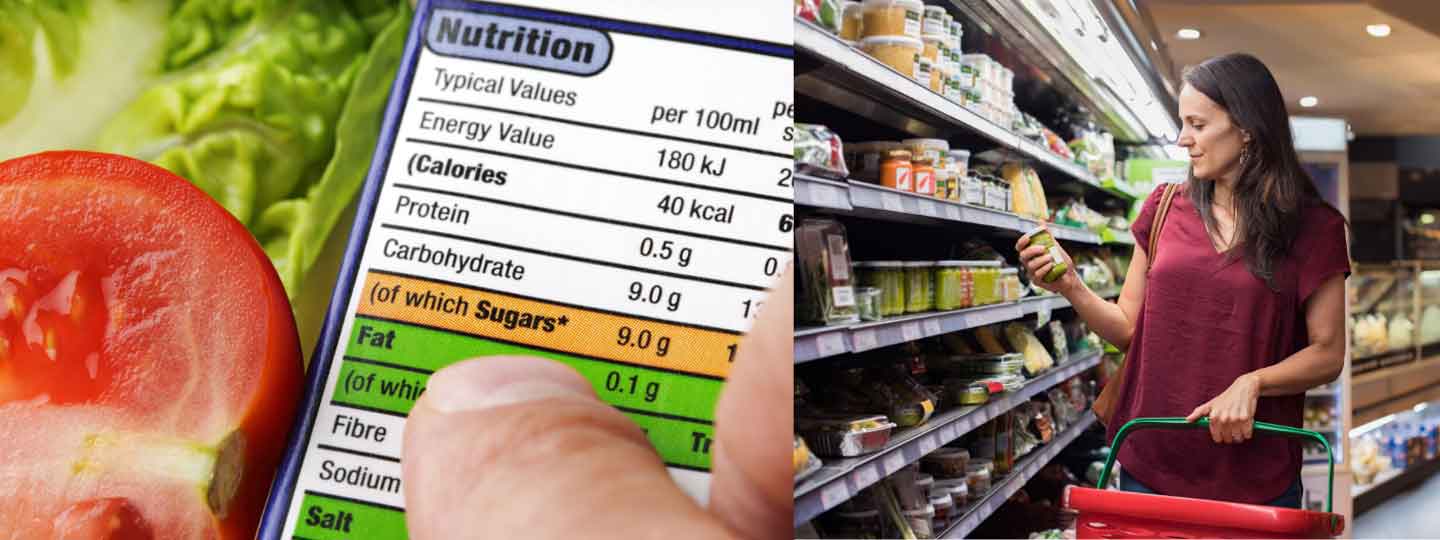Learn why food labels matter
22 June 2020
Do you read food labels? Many of us don’t. Dr Sarah Schenker, a registered dietitian, nutritionist and author of the British Dietetic Association’s food fact sheet on osteoarthritis says:
“When I go shopping, I don’t see many people scrutinising the backs of packets. Part of that’s because labels have become increasingly complicated. There’s so much information on the back of the pack, the font is very small, and you might not understand the ingredients list.”
But checking food labels is well worth it, as it can help you make informed – and a better diet can have a positive impact on your health.
What to watch for
Pre-packed food has to feature certain information on the back, including the number of calories and the amount of fat, saturated fat, carbohydrate, sugar, protein, and salt per 100g/100ml portion.
Checking food labels will help you choose foods that have fewer calories and are lower in fat, saturated fat, sugar and salt. Making healthier choices can help you lose excess pounds, which can make a big difference to arthritis symptoms.
A 2018 American study, which followed a group of overweight and obese people with knee osteoarthritis over 18 months, found that weight reduced pain and significantly improved function and mobility.
Traffic light coding
Fortunately, there’s no need to study the small print on the back of every packet to work out what’s healthy, as most of the big supermarkets feature more consumer-friendly information on the front.
The ‘traffic light’ system shows whether a product Is high (red), medium (amber) or low (green) in fat, saturated fat, sugar and salt.
“It can be helpful as it means you can easily choose between different products.” Dr Schenker says. “You might look at two or three products that you think are going to be quite similar in terms of ingredients, but when you check the front-of-pack information, one might be significantly higher in fat, salt or sugar.”
The more green on the front of the pack, the healthier the product, while foods with more red on the front should be eaten less often and in smaller amounts.
Choosing ready meals
Ready meals aren’t always the healthiest option, but they can be a real help when your symptoms are bad. And always checking the labels means you can choose the healthiest one available.
Dr Schenker advises paying attention to the label’s advice on portion size, as calories and other measurements are shown per portion.
“Sometimes labels can be quite deceptive.” She says. “Things like pizzas will often say in really small print, ‘Serves two’, whereas most people think it just serves one! If it’s meant for two, either share it or save the other half for the next day and fill up on vegetables.
Reference intakes
Many big supermarkets feature ‘reference intakes’ on the front of pre-packed food. These give you a rough idea of how many calories you should have each day, and the recommended daily limits on saturated fat, salt and sugar.
The front-of-pack labels show the percentage of the reference intake that a portion contains. So, if the label says ‘20 per cent’ under ‘calories’, a portion contains 20 per cent of the amount of calories you should have in one day.
Understanding ingredients
Ingredient lists can be a source of confusion than clarity – often surprisingly long, and full of things you’ve never heard of.
The important thing to remember is that ingredients are listed in order of weight – heaviest first, if sugar is near the top, or the first few ingredients are high-fat items such as butter, cream or oil, it’s probably not the healthiest.
We’re here whenever you need us.
- If you would like to talk to someone, you can call our free helpline on 0800 5200 520 (Monday to Friday, 9am to 6pm)
- Chat to our Arthritis Virtual Assistant, using the blue icon in the bottom right corner of this page
- Join our online community
- Stay in touch and follow us on Twitter, Facebook and Instagram